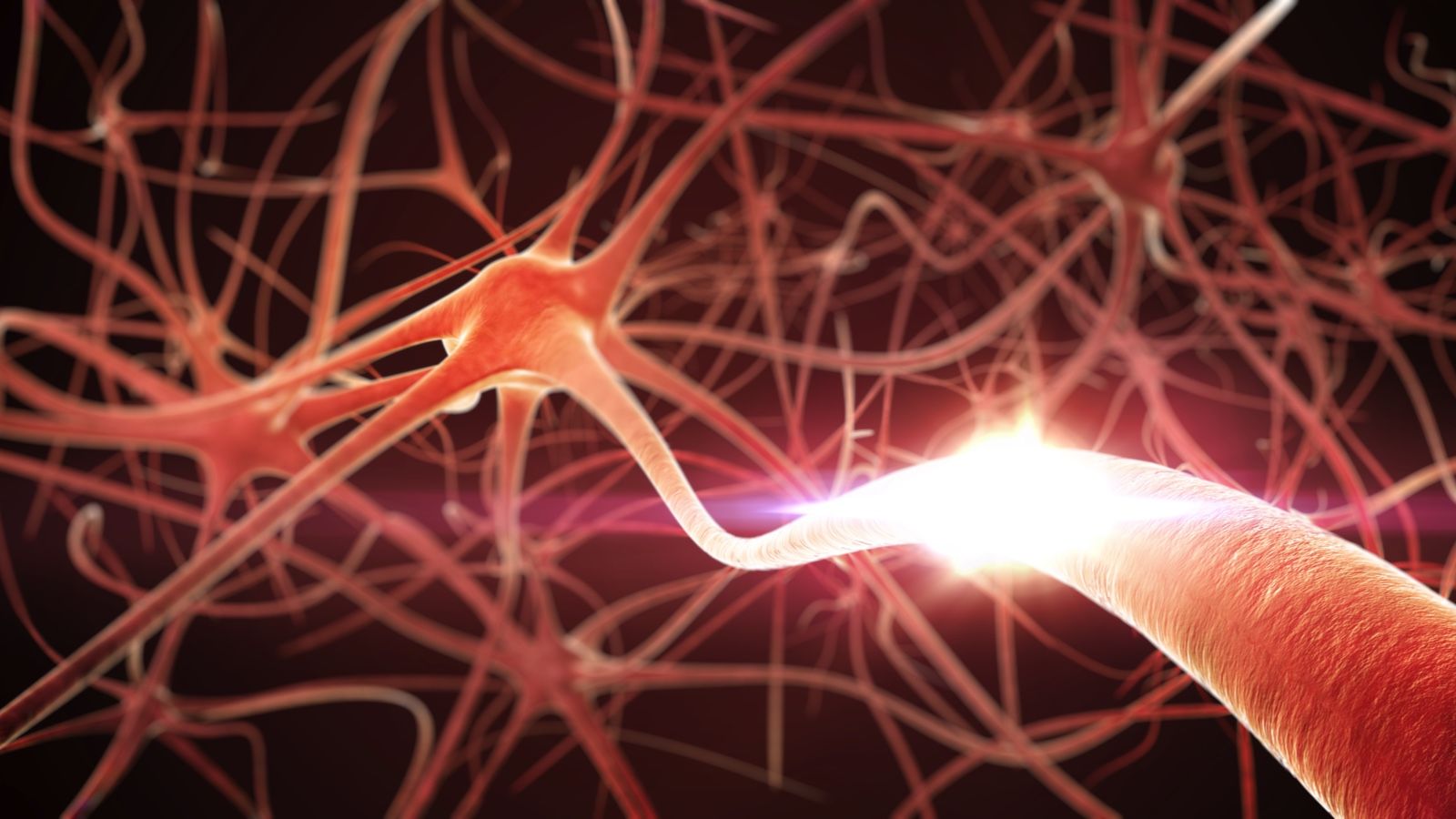Using Neuroscience to Understand Reading Slumps
I wanted to write this article because neuroscience intrigues me. I spent a year as an undergraduate student studying the subject. But eventually I realized that I couldn’t spend my life in a lab, and I dove back into writing and literature full time. I thought writing this article would be a good chance to reacquaint myself with reading primary scientific literature.
If you don’t know what primary literature is, the term refers to articles written for a specialized and educated reader. Scientific work of this kind appears in journals such as Nature and Science. Primary papers and articles are typically peer reviewed, which means they are thoroughly vetted by a team of people who are experts in their respective fields. This literature is not simple. Often, peer-reviewed papers are intended for other people in the same or related fields. Primary literature will usually include long complex sentences, a plethora of acronyms (usually internally defined but not always), and will often casually reference other primary literature as the assumed reader knows the intricacies of the most popular or influential papers in the particular field at hand.
After the first four articles I read, it was hard for me to focus with the same amount of absorption, and I decided to give my brain a rest. Usually I can read all day, but my preference for literary fiction does not require me to flex the same patterns of neurons, and I found myself working parts of my brain that have been dormant for years. The mental strain was more than I was used to, and reading felt like decoding a foreign language. The next day I was apprehensive to dive back in, and a few days passed where I just didn’t want to pick up a book at all. (Quite a rare occasion for me.)
Was I in a reading slump now? This is where the article gets tricky. What is a reading slump? Well, looking up reading and slump individually equates to when reading falls off. Merriam-Webster and the Oxford English Dictionary both don’t have the term as a whole, nor does American Heritage, so I fall on the most credible source I could find: The Urban Dictionary. UD defines a reading slump as “A reader’s worst nightmare. Not being able to pick up a book and read because you can’t, you just can’t read.”
This definition is slightly more specific, but it gives you no parameters. So, is any time you can’t read considered a reading slump? I don’t think so. I think we can start a definition by saying no immediate external stimulus is fighting for your attention; if there is construction outside loudly breaking your concentration every few minutes, I wouldn’t count that as a reading slump.
To continue the definition I’d add that this condition must last for more than one attempt at reading. But even with this definition, which narrows the scope, it will still be hard to give you a definitive neurobiological reason for why this happens. There is not going to be one simple answer for everyone, and every time you hit a reading slump there could potentially be a different problem. Though, understanding some basic neuroscience will give you concepts to consider the next time you slump on your reading.
One of the primary papers I read was “Neurobiological Bases of Reading Comprehension…” The abstract for this article starts, “For accurate reading comprehension, readers must first learn to map letters to their corresponding speech sounds[1] and meaning and then they must string the meanings of many words together to form a representation of the text.” What they discuss here is the transference of writing from the page to the reader. Following this quote, the article abstract explains that from this representation of the words held in our mind, we must then understand its context within everything else. This is, more or less, what fully comprehended text is. Even if we read a hurricane warning on a picture, understanding the context of the words tells us if we need to panic.
In short, the study says there are three levels of comprehension we need to read accurately: words, sentences, and comprehending the sentence’s place in context (whether that be in a paragraph or understanding that a sign applies to you). If we fail at any of these three, it can lead to confusion or an inability to read. If it happens more than once, we are at a slumpy reading impasse.

There are a few common things that cause faults in our ability to read, but it should be understood that the reasons for reading slumps can span from anxiety to brain tumors, eye problems that cause headaches when you read, sleep disorders, and many other possibilities. What I’m trying to say is that this article cannot diagnose you. Not being able to read can be indicative of a larger issue, and I don’t want to steer you wrong if you are experiencing severe symptoms. I am not a specialist; like you, I am a reader. So, here, in the article, I’ll go over what I find to be the most common causes for reading slumps in my life, and some basic concepts to help understand how we currently understand our brains to work, something I hope will help you when considering not only your reading issues but how you are forming thoughts at any given point in time.
There is a near-platitude you come across when studying neuroscience: “neurons that fire together wire together.” This saying reflects a basic principal of association on a biological level. This phenomenon is called Hebbian plasticity. When one neuron fires in conjunction with another previously connected adjacent neuron, the connection between the two is strengthened; this increases the likelihood of those neurons firing together in the future.
The webs these associated neurons create—which can be called neural networks, network ensembles, systems, and other names—are how we fully comprehend what is happening in a text. Interference is a term regularly used to describe how neural signals can intermingle. A common example of one type is modal interference. This is the phenomenon that occurs when you can’t keep track of something you hear while you’re reading. Modal interference happens when different modes of sensory input are competing for your working memory’s attention.
When reading, you should remember that the experiences you’ve had will inform the images you create in your mind. And during this process, often other neurons will fire that have strong bonds to the neurons directly involved with memories you are using to imagine the text. This mixing of old memories with new information or memories has been termed proactive interference.
Another helpful basic neuroscience concept to keep in mind is habituation. This is when your neurons stop reacting to repeated stimuli. It’s the reason we are not constantly conscious of how our clothing feels rubbing against our skin. As readers, this physical reaction happens with most of our senses when we read, the world outside the book goes blank due to habituation and an act of willful focus because we cannot pay attention to everything at once.
On average, the conscious, intelligent, and focused human brain can process around 50 bits of information per second in its working memory; this is roughly 300 words per minute or five words a second. Trying to process too much information can result in cognitive overload.
The concept of cognitive load refers to the amount of information our working memory can process. Cognitive load is typically broken into three different aspects: intrinsic, extraneous, and germane. Intrinsic cognitive load is the difficulty inherent in the specific learning objective (e.g. it is harder to decode ‘phantasmagoria’ or understand Lucan than it is to decode ‘cat’ or read Shel Silverstein); extraneous cognitive load refers to the difficulty encountered when deciphering the format from which you are receiving information; and finally, germane cognitive load refers to difficulty someone meets when committing the specific information to memory systems beyond their working memory. These three processes together are how many scientists understand conscious sensory information processing.
Cognitive overload happens when you are asked to process more than 50 bits of information, or cannot process information due to your cognitive state. The limit we have when processing information is the reason most people will have trouble remembering numbers that exceed seven digits (the number of digits is hotly debated, but the important factor is that a limit exists). Cognitive load theory holds concepts that are incredibly helpful to consider when attempting to process and remember information; learning more about these concepts can help you take measures so your time spent learning is more efficient.
The final issue I’d like to mention is maybe the most frequent for me: fatigue or tiredness. The scientific definition of fatigue has yet to be standardized, making it hard to pin-point, or even compare studies. Often patients who state symptoms of fatigue have different causes for their problems. But there are some basic commonalities that tests have come to show. Fatigue seems to be correlated with an increase in cytokines which are then eaten by active microglia, much like the eating of cytokines active microglia do while we sleep. We also have come to understand that neuro-fatigue affects the arousal systems, sleep regulation/executive control systems, and our reward systems. A recent study also stated, “Our present findings indicated that more functional connectivities were activated at the mental fatigue stage for efficient information transmission and processing, resulting in a loss of small-world features.” This can didactically be stated as “your brain uses other parts when a small network of neurons is overused.” This study, and others I have mentioned, use network theory to explain the connections between different parts of the brain. This has become a growing trend in neuroscience; network theory allows scientists a flexible and useful framework in which data can be analyzed, and microscopic interactions can be more easily conceptualized. If you want to know more about network theory in neuroscience, the basics can be found in this video.
These are simply a few things to keep in mind when you are wondering why you’re in a reading slump. Our current understanding of the brain is tenuous at best. Much of neuroscience today is finding the underlying mechanical processes for what each region of the brain does. People have been living incredible lives since the dawn of humanity without knowing the biology of their minds. It is only since the 20th century that the field of neuroscience has really been born. With our technological developments that seem to progress at an exponential rate, we are able to see more and more of what is really going on inside the mind. We make constant advancements, and piece by piece we are coming to a more comprehensive understanding of how our brains work. As this happens, we will get more and more information about what we might consider when reflecting on a current slumped reading condition. In the future, we will hopefully have proven work-arounds for undesired mental inhibitions, but until then I hope this information can serve as a jumping-off-point for your understanding of reading slumps.
[1] I’d like to call attention to the fact that this wording is ableist. Not everyone uses speech sounds. To learn more about the non-verbal processing of words, take a look at this link.



